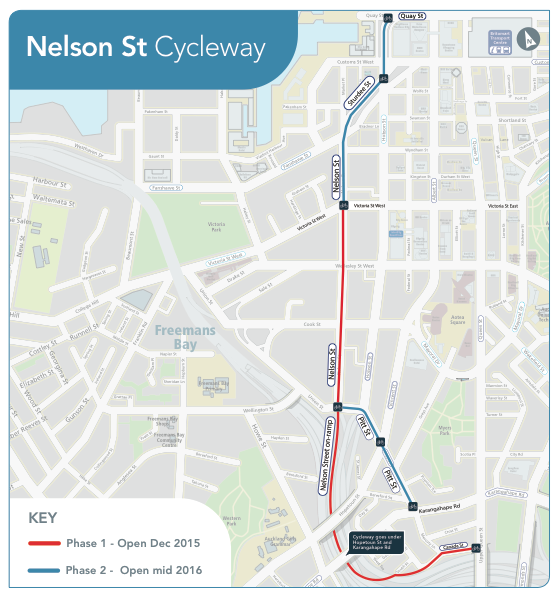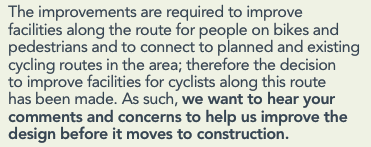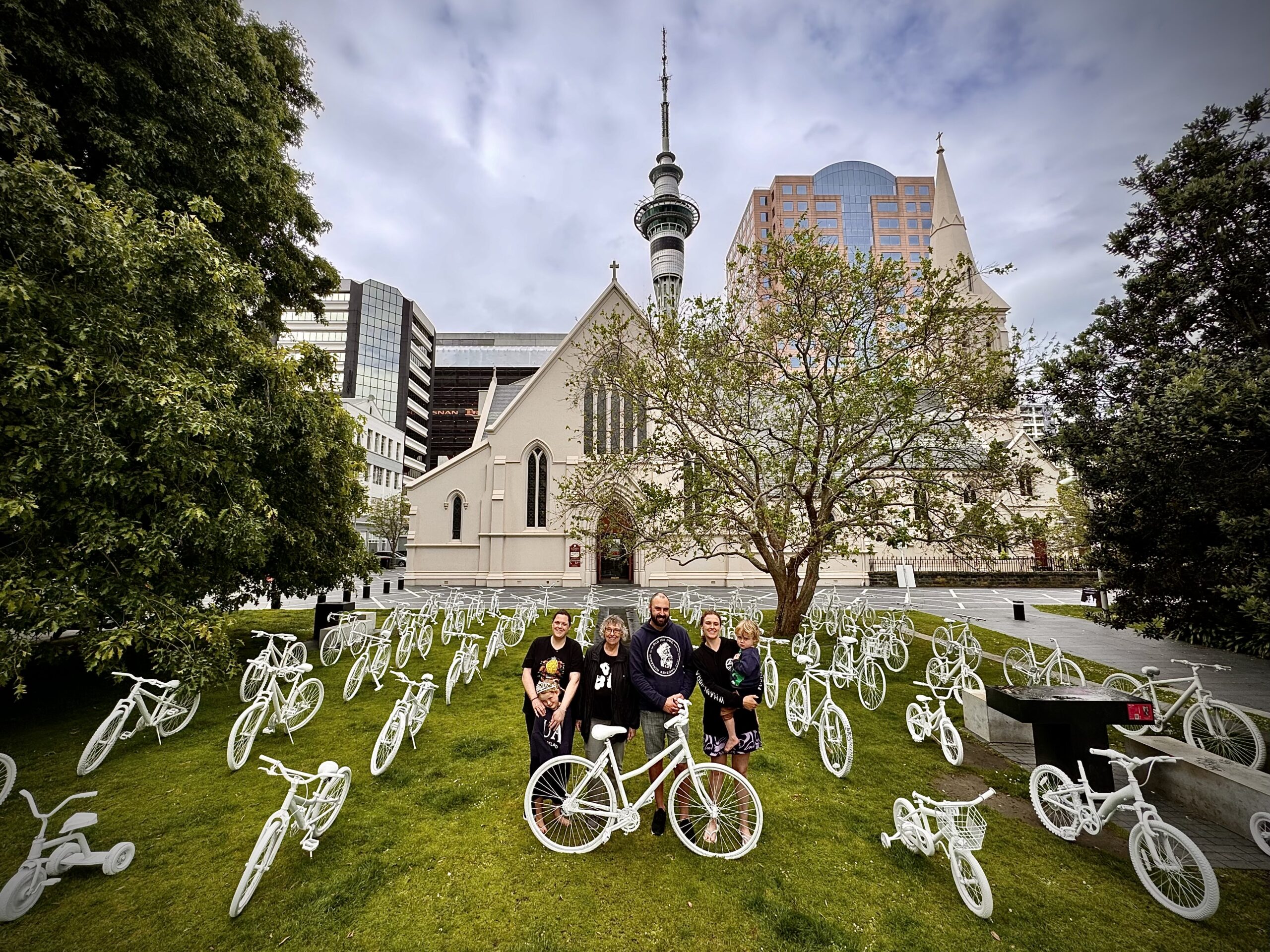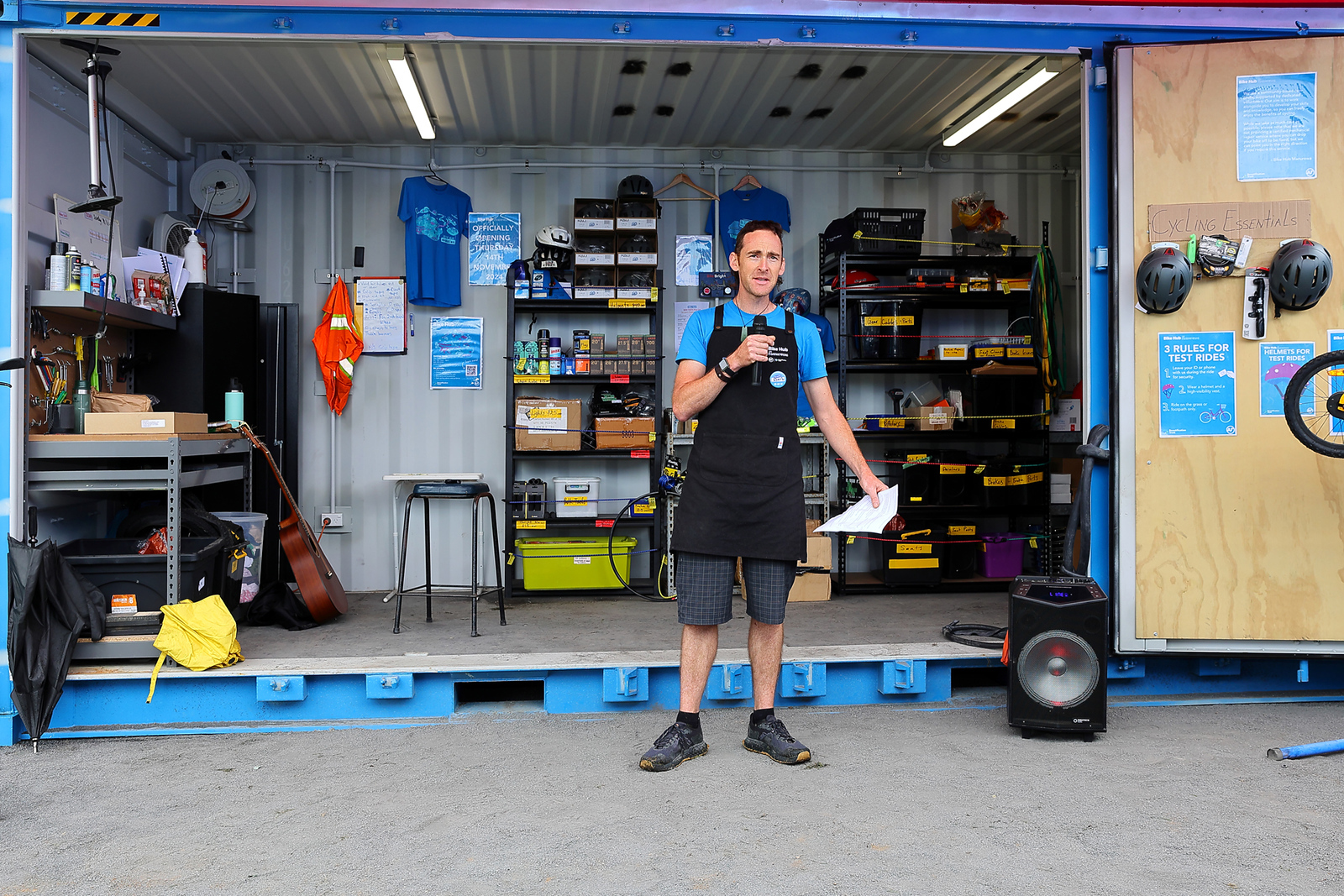Consultation opens today on Phase 2 of the Nelson St cycleway. Phase 1 is of course NZTA’s spectacular bridge + flyover connection which loops down from Upper Queen St, along Canada St, onto the old off-ramp, and emerging at Union St, whereupon Auckland Transport pics up the baton and runs with it down the west side of Nelson St as far as Victoria St.
Phase 2 is entirely Auckland Transport’s project: it continues down Nelson St as a two-way fully separated cycle lane on the east side, then a shared path along Sturdee St and Lower Hobson St, where it will (sooner rather than later) link into a cycleway along Quay St. You can give feedback HERE.
We would have preferred the eastern of the two routes originally proposed, which jogged right at Victoria and then continued down Hobson St. However, the route over the Lower Hobson St flyover wasn’t deemed feasible – we understand that this is due to bus relocations during the CRL construction, and we accept that with good grace. AT also makes the case that going directly down Nelson St poses fewer conflicts with driveways, and will provide more direct access to e.g. Wynyard Quarter.
As you can see on the map above, the other part of Phase 2 is a cycleway up Pitt St: this will be a shared path from Nelson St to Hopetoun St, and thereafter a two-way separated cycle lane up to K Rd… yes indeed, laying a trail for eventual connection to proper bike lanes on Karangahape Rd itself!
(Note also the cycle lanes shown as future projects for Hopetoun St and Vincent St on the map below; these came about as part of a AT-CAA joint project. Slowly but surely joining the dots!)
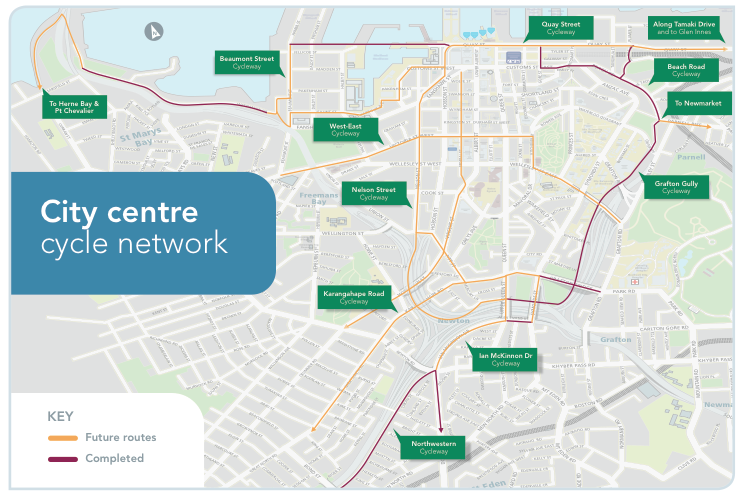
You can provide feedback via AT’s website – including your thoughts about two different options for the Hopetoun/Pitt St intersection – until Monday 5 October.
See also Transportblog’s thoughts on the design – some very useful observations there.
Two more things to be glad about: the project is scheduled for completion by mid 2016. That’s pretty speedy!
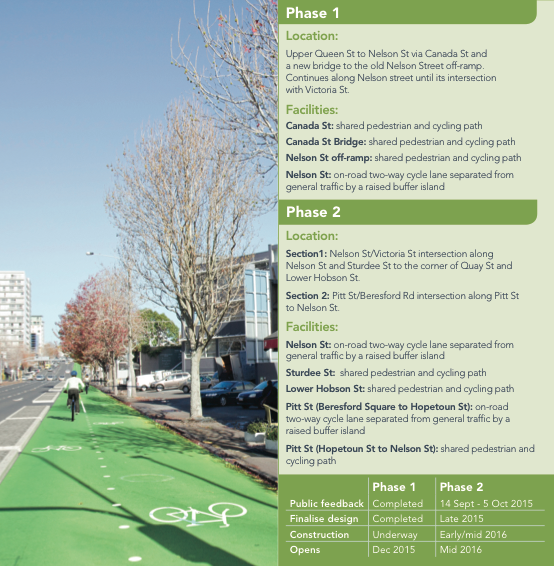
And, we’re glad to see the matter-of-fact language about how necessary these improvements are – in other words, the feedback that’s being invited is not about whether, but about how. It’s a welcome confirmation of a fundamental shift in how our city is making improvements for people on bikes, and we like it.

